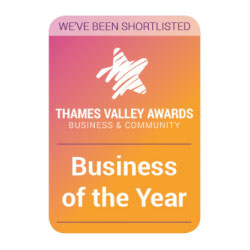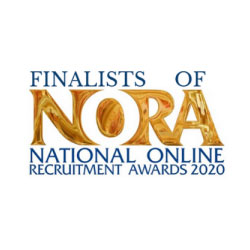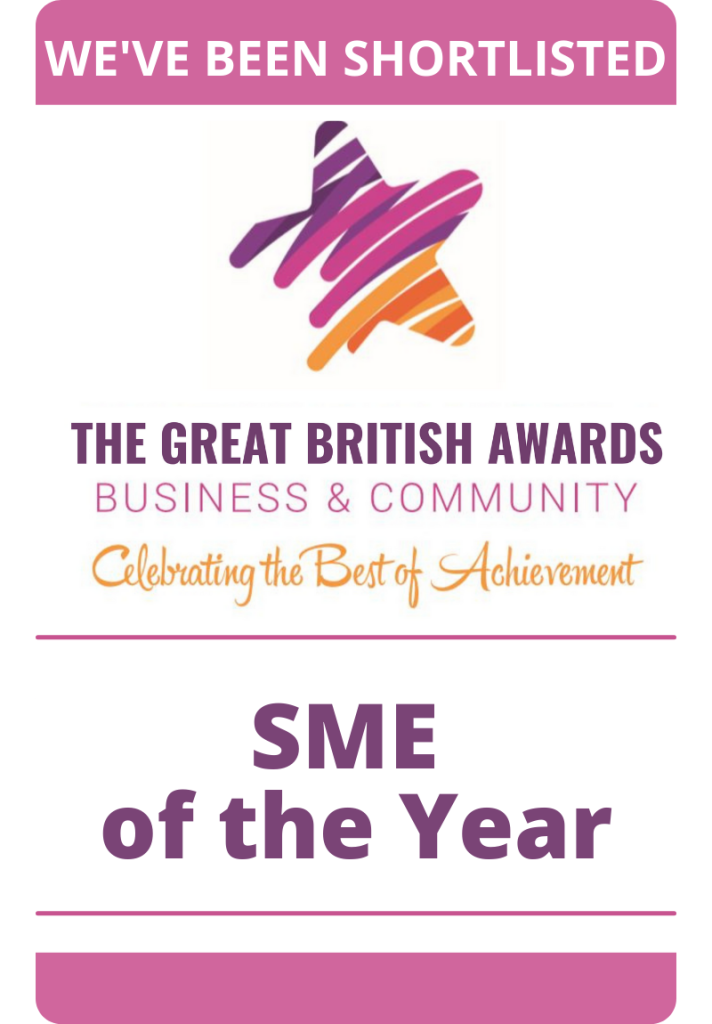[vc_row][vc_column width=”2/3″][vc_column_text]Hey! It’s a new week so I’m here to bring you your next round-up of news and resources! Enjoy!
[/vc_column_text][vc_empty_space height=”20px”][vc_separator][/vc_column][vc_column width=”1/3″][vc_single_image image=”166″][/vc_column][/vc_row][vc_row el_id=”firstpost”][vc_column][vc_empty_space height=”45px”][vc_custom_heading text=”Is Your Employees Benefit Package Competitive Enough?” font_container=”tag:h3|text_align:left|color:%23055091″ use_theme_fonts=”yes”][vc_single_image image=”1344274″ img_size=”full” alignment=”center” css=”.vc_custom_1478085630340{margin-bottom: 30px !important;}”][vc_column_text]An attractive benefits package is key to employers competing for high calibre applicants – but what perks are considered to most enticing to today’s job seekers? A recruitment and salary survey from The Undercover Recruiter has revealed that benefits are playing an even greater role within the decision making process of candidates. This is supported by another study by Capita which shows that 66% of employees are more likely to stay with an employer that provides good benefits.
Gym memberships and health care are becoming more prevalent and 85% of companies are now offering flexible working hours, and 70% are providing some form of education support or study. Pensions used to be a key differentiator but with the Workplace Pensions roll out almost done, more employers are starting to offer enhanced pensions to entice new candidates.
Even small-scale benefits carry a significant amount of weight for potential employees. Benefits that make a big difference to their day-to-day life can be just as good. The Chartered Institute of Personnel and Development noted in an article that one of the most common benefits appreciated by workers are low-key perks. What’s a low-key perk you ask? Things like free tea and coffee as well as being allowed to have online purchases delivered to the workplace is an example of this. It seems like every little helps!
Source[/vc_column_text][vc_empty_space height=”20px”][vc_separator][/vc_column][/vc_row][vc_row el_id=”secondpost”][vc_column][vc_empty_space height=”45px”][vc_custom_heading text=”How to Write an Enticing Job Description ” font_container=”tag:h3|text_align:left|color:%23055091″ use_theme_fonts=”yes”][vc_single_image image=”1344275″ img_size=”full” alignment=”center” css=”.vc_custom_1478085644147{margin-bottom: 30px !important;}”][vc_column_text]If you’re looking for fantastic applicants then you better have an enticing job description. Don’t keep using templates, it’s time to get down to the good stuff! The best way for you to write a great job description is to use emotional triggers. Let me explain:
Emotion Trigger: The Desire for Esteem
When you use social media, you have to admit that having the likes and comments rolling in makes you feel good. Let’s apply that to your job description. You want to add an emotional boost to the power of belonging. Consider how you can not only make applicants feel welcome and part of the team, how can you make them feel liked and respected – and needed by your company? An example of doing this would be instead of beginning your job description with “Responsibilities” instead put “Your Impact” and outline just how critical the candidate’s success will be to your company.
Emotional Trigger: The Need to Belong
Your candidates will be joining a team, so let’s talk about the team. Group photos, talking about group outings or your company’s internal kudos system can be super effective in job descriptions. Use inclusive language in your post such as “You’ll be joining us planting trees on earth day!” instead of simply stating that’s a thing you do, it will push their emotional buttons. Try using social proof too – an Instagram feed of your company they can browse is a good idea.
Emotional Trigger: The Desire to Grow as a Person
Candidates want to be inspired and they want to be inspired to grow. Every potential employee wants to be reassured that they won’t just be another cog in the machine. You can do this by telling the candidate what they can expect to accomplish in the first year of their employment. Another simple way to do this is to just ask for candidates who want to grow! It might come off as a bit cheesy, so to avoid this title the section “About You” and describe what you think they might want to accomplish.
Source[/vc_column_text][vc_empty_space height=”20px”][vc_separator][/vc_column][/vc_row][vc_row el_id=”thirdpost”][vc_column][vc_empty_space height=”45px”][vc_custom_heading text=”5 Tips for Getting Discovered by the Best Companies” font_container=”tag:h3|text_align:left|color:%23055091″ use_theme_fonts=”yes”][vc_single_image image=”1344276″ img_size=”full” alignment=”center” css=”.vc_custom_1478085672914{margin-bottom: 30px !important;}”][vc_column_text]Finding the right job for you is getting harder than ever. So how can you ensure that the right companies spot you? We’ve got 5 tips for you:
-Participate in Online Communities – There are online communities related to the jobs you want. Employers sometimes post jobs on these or they keep an eye on them to spot potential candidates. You can find them by doing a Google search like intitle:forum for example if you were looking for something involving photography then you’d say intitle:forum photographer. It’s a great way to network with potential employers and future colleagues.
-Get on the Shortlist – Sometimes things don’t work out when you apply for the job. Regardless of this good employers are attempting to build lists of great candidates they previously declined so that if a similar position opens, they have candidates ready to contact. Be cordial when they decline you and make it easy for them to keep you on their radar by sending them occasional updates about where you’re at in your career.
-Ace Your LinkedIn Profile – LinkedIn is still one of the most powerful tools for recruiting. Recruiters looking for a hire are probably spending very little time skimming your profile – on average recruiters only spend about 6 seconds on your CV so you can safely assume they spend less on LinkedIn. You want to use numbers to prove how good you are at your job – that’s what they like to see.
Source [/vc_column_text][vc_empty_space height=”20px”][/vc_column][/vc_row][vc_row][vc_column][vc_empty_space height=”45px”][vc_custom_heading text=”Pay Will Rise by 2% in 2017″ font_container=”tag:h3|text_align:left|color:%23055091″ use_theme_fonts=”yes”][vc_single_image image=”1344277″ img_size=”full” alignment=”center” css=”.vc_custom_1478085687377{margin-bottom: 30px !important;}”][vc_column_text]According to a survey from pay analysts XpertHR, employers in the private sector are planning to award a 2% pay rise to staff over the next year. The 2016 Annual Survey of Hours and Earnings reveals that median gross weekly pay in the private sector rose by 3.4% over the year to April 2016 – up from the 1.6% increase in 2015.
They have also recorded private sector pay awards over the past year at 2% suggesting that the caution employers have shown recently when it comes to a pay rise is going to continue for another year. The public sector employees continue to be subject to the Government’s policy of limiting increases to 1% each year. Over the next year most pay awards (60%) are expected to be at the same level as paid this year – less than a fifth are expected to be higher.
A 2% pay award has dominated their pay settlement data for several years now and the next year looks to be the same. Around a third of pay awards are expected to be exactly at this level. Many sectors by industry are also looking at another year of pay awards at 2% but the construction sector is predicting higher – around 3%. Sectors that include utilities, engineering, chemicals, transport and professional services are all predicting pay awards of 2% over the next year.
Source[/vc_column_text][vc_empty_space height=”20px”][/vc_column][/vc_row][vc_row][vc_column][vc_empty_space height=”45px”][vc_custom_heading text=”Women and Men Won’t Read Economic Equality Until 2186″ font_container=”tag:h3|text_align:left|color:%23055091″ use_theme_fonts=”yes”][vc_single_image image=”1344060″ img_size=”full” alignment=”center” css=”.vc_custom_1478085699514{margin-bottom: 30px !important;}”][vc_column_text]The World Economic Forum has stated that efforts to close gender gaps in workforce and pay participation have slowed so much in the past year that men and women reaching equality may not happen for another 170 years. Devastating news. Statistics last year predicted that the gap could close in 118 years but since progress has halted so dramatically, this has significantly increased the time frame.
The Swiss non-profit WEF said: “These forecasts are not foregone conclusions. Instead, they reflect the current state of progress and serve as a call to action.” Overall Finland and Iceland ranked highest among 144 nations measured on progress in equality in education, survival and health among other factors.
The gap in political empowerment for example, it said that it was particularly pronounced in the US, which may soon elect its first female president. The US ranked 73rd in political empowerment. Nations with significant political gender gaps are set to lose out, the WEF said in a 391 page report. “In the political sphere, women’s engagement in public life has a positive impact on inequality across society at large,” it said. “In addition, there is a range of evidence to suggest that women’s political leadership and wider economic participation are correlated.”
With regards to earnings, around 54% of working-age women on average participate in the formal economy compared to 81% of men. Women’s average annual earnings are roughly half those of men – estimated at $10,778 vs the $19,873 men get. “Ensuring the healthy development and appropriate use of half of the world’s total talent pool has a vast bearing on the growth, competitiveness and future readiness of economies and businesses worldwide,” the WEF said.
Source[/vc_column_text][vc_empty_space height=”20px”][/vc_column][/vc_row][vc_row][vc_column][vc_empty_space height=”45px”][vc_custom_heading text=”The Evolution of Women’s Working Conditions in the UK” font_container=”tag:h3|text_align:left|color:%23055091″ use_theme_fonts=”yes”][vc_single_image image=”1344278″ img_size=”full” alignment=”center” css=”.vc_custom_1478085716641{margin-bottom: 30px !important;}”][vc_column_text]This week we discovered a really interesting infographic that explores the progress of women’s working conditions in the UK. In the Victorian Age, women needed an income to support their families so their work typically consisted of domestic service and home based jobs or production jobs making shoes and clothes in large factories. Women started being employed by different sectors such as tin mines, farms and coal mines. During that time work was exhausting and women were paid far less than men.
During the First World war there were more working opportunities for women since they had to replace the male population who went to war. New jobs were introduced such as policewoman, bank clerks and postal workers. However, the problem of equal pay was still present. During this time women managed to obtain raises in wages and better conditions but this disappeared after the war when the recession hit. In World War two the employment of women dramatically increased again and in some cases women were able to have the same working conditions as men but only if they could perform the job without supervision or assistance. Most of the time they were still receiving only 53% of men’s wage.
The infographic, created by Francesca Baggio – a marketing and Social Media enthusiast at Market-Inspector.co.uk – has further information about the progress of women’s working conditions in the UK and if you’re up for a quick history lesson then you can check out the infographic here.
[/vc_column_text][vc_empty_space height=”20px”][/vc_column][/vc_row][vc_row][vc_column][vc_column_text]Did you know?
[Tweet “The most difficult language to learn is Basque, which is spoken in northwestern Spain and southwestern France. It is not related to any other language in the world. It has an extremely complicated word structure and vocabulary.”][/vc_column_text][/vc_column][/vc_row][vc_row][vc_column][vc_separator][/vc_column][/vc_row][vc_row][vc_column][vc_empty_space height=”35px”][/vc_column][/vc_row][vc_row][vc_column][vc_column_text]
About the author…
Nicole Debson
Director & Founder
With 30 years in recruitment, a genuine interest in people and a desire to help forge careers, Nicole has built ABL on the principle of making businesses better and that little bit more international. Seeking to help candidates navigate their career path; to help clients find the ideal employee, her hands on approach is what has moulded our company. Fluent in French, with good Spanish, and a Masters in Industrial Relations & Personnel Management, you’ll find Nicole thumbing through her well-worn copy of Jack London’s White Fang, her all-time favourite book.[/vc_column_text][/vc_column][/vc_row]






